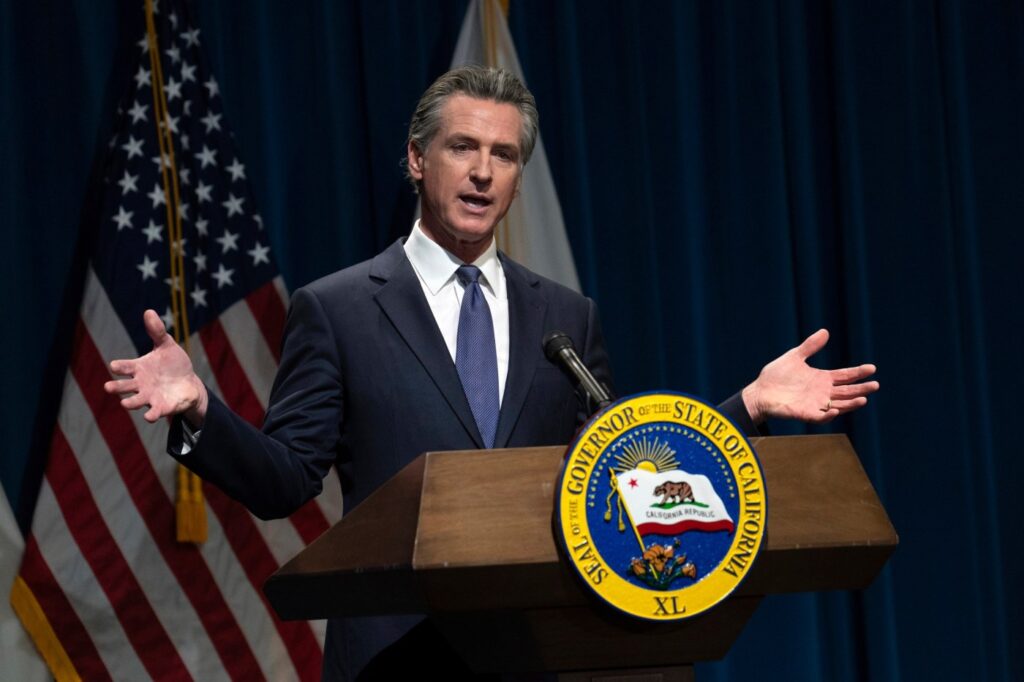
Only two years ago, California enjoyed an unparalleled budget surplus of $97.5 billion, the result of soaring revenues and an influx of federal coronavirus funds. This editorial board advised Gov. Gavin Newsom to use that opportunity to make substantive changes to the budgeting process, invest in long-neglected infrastructure and prepare for the inevitable downturn.
Any fiscally responsible Capitol observer would have offered similar suggestions. Former Gov. Jerry Brown famously touted charts at all of his budget-release press conferences reminding observers that boom years don’t go on forever. His goal was to remind legislators not to get too carried away creating permanent spending programs.
Newsom largely ignored such advice. As federal COVID funds ran out and the economy slowed, California faced a sizable budget deficit last year. Newsom approved a variety of budget gimmicks to get through the year, with the unrealistic expectation that a recovering economy would throw a lifeline. It didn’t, and now the state faces a deficit of $45 billion (higher according to other estimates).
With no other realistic choice, the governor’s latest budget is serious about cuts, but the Legislature has resisted them. The Legislature has until midnight on Saturday to meet the state constitutional requirement that it pass a balanced budget. If they miss the deadline, the Legislature will pass a provisional budget and follow up with trailer bills.
In announcing his budget plan, the governor said many of the right things. He vowed to cut vacant state positions and avoid raising taxes, although his plan does include some proposed backdoor tax hikes for business. He would cut some from the outsized climate-change budget, slash child-care subsidies and, foolishly, swipe $12 billion from the rainy day fund.
Lawmakers are pushing back over his plans to cut housing and homelessness funding. Instead of paring social services, Democratic lawmakers want deep cuts at the California Department of Corrections and Rehabilitation. There’s plenty of room for cutting the bloated prison budget, but it’s a politically risky move at a time of growing fear about crime.
How did we get here? CalMatters columnist Dan Walters summed it up succinctly: “In 2022, Newsom’s budget staff evidently looked at a spike in tax revenue as the state’s economy recovered from the pandemic, mostly due to massive amounts of federal relief funds, and concluded that the cornucopia would continue indefinitely.” In our view, the governor owns the deficit and has no excuses given the size of the previous surplus.
One item highlights that point. Always eager to placate his labor-union allies, Newsom in October signed a law that boosted the minimum wage for healthcare workers to $25 an hour. As the Los Angeles Times reported, “The governor since has been crystal clear about his concerns over the plan’s price tag, originally pegged at $2 billion from the state general fund, with another $2 billion paid with federal funds, in its first year.”
That remains a source of contention, but it strikes us as an unforced error. Why pass something that the state likely couldn’t afford? The state will pass a budget and it will have cuts. But the entire mess is a reminder that — in flush times or lean ones — this governor and Legislature are not focused on the long-term fiscal health of the state.
